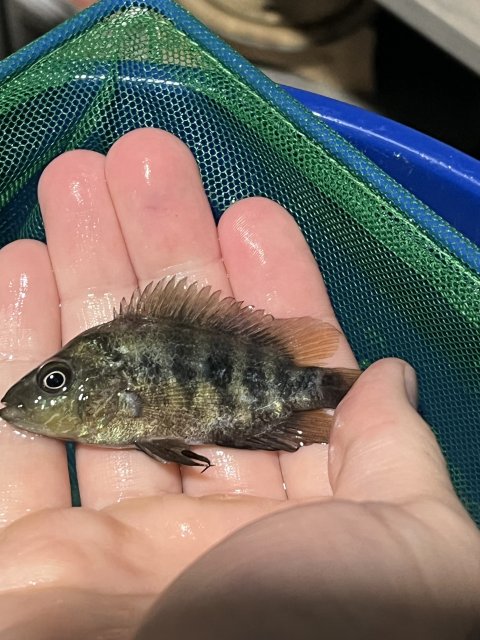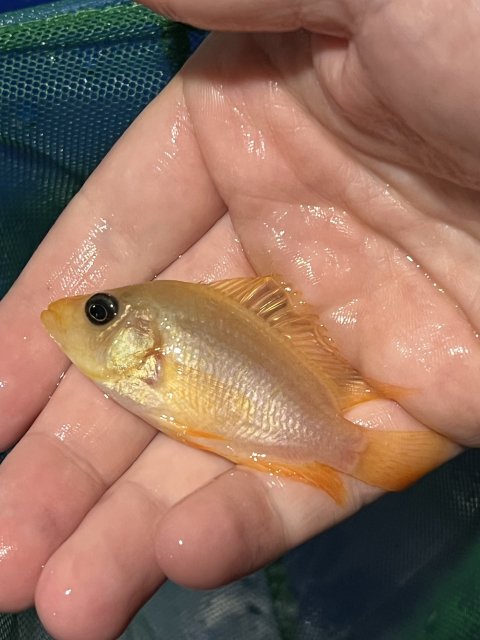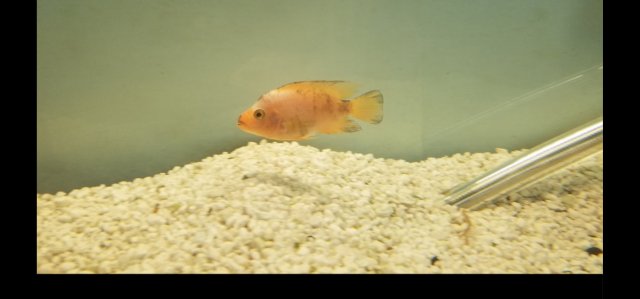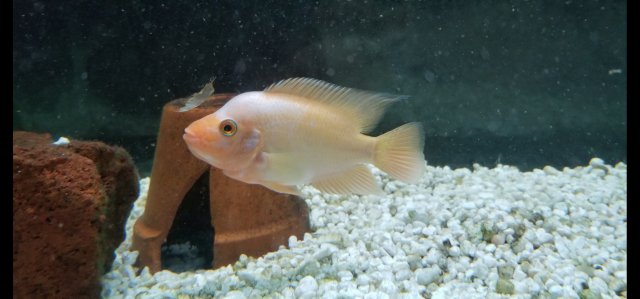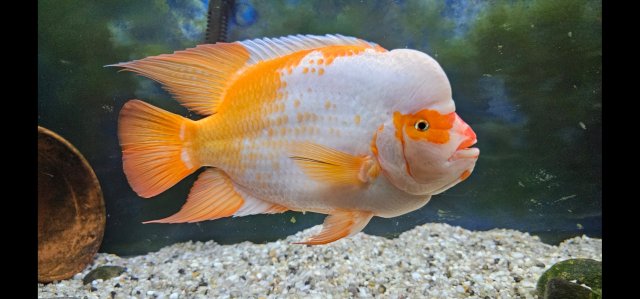Wow that’s an incredible fish. I would be interested in learning more about your feeding routine. I have been an overfeeder in the past and try hard to avoid it. You mention in that thread about skipping days, but did you do that when they were younger as well? I’ll post a picture of their current size. If not, at about what age/size do you slow down on their feeding. I feed mostly NLS to my other fish with a mix of Xtreme spriluna and krill flake as well as a treat of Hikari Vibra Bites and Fluval Bug bite flakes.
Thanks, yeah he's a brute. At the rate that he's going I won't be surprised if he makes it to 15. Young fish need to consume calories daily, when small fry, 3-4 times a day. Once they begin to gain some size, start dialing back on frequency, but continue to increase quantity. I pretty much fed daily until he was semi mature, then began slowing down and let him ease into maturity. A lot also depends on the individual fishes activity level in the tank, vs how many calories they need for proper growth & overall health. The fishes shape/size will be your overall guide. Some grow outs require a bit more fine tuning than others. Your food choices look good.
I agree, I am a fervent believer in large frequent water changes. I can’t say that I’ve done daily but minimum once a week, close to 75%, often twice weekly with the second being closer to 50%. These growouts I may try the daily method.
I have bred & raised my fair share of various cichlid fry over the years, nothing, and I mean nothing, beats large daily water changes.




